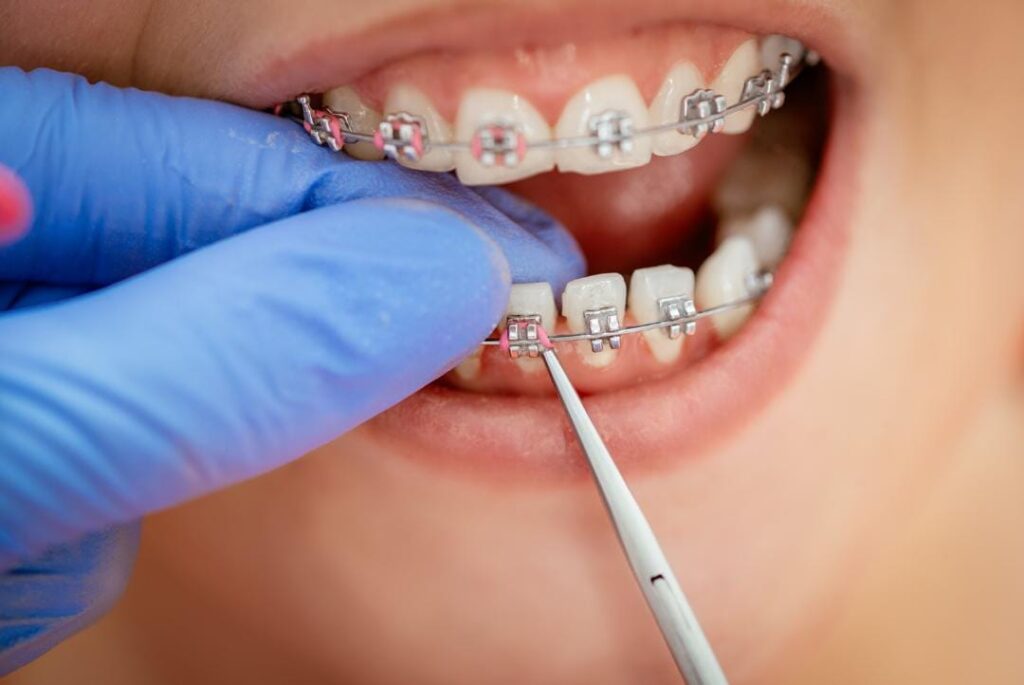Metal Braces

What are the advantages and disadvantages of metal orthodontia?
Traditional braces are more effective at treating extreme overcrowding than other options like clear braces or Invisalign aligners and are less expensive. They give your orthodontist the control needed to move the teeth in small increments at a time. Wearing these types of fixed braces also means that you don’t have to worry about ever misplacing your aligners. The main disadvantage of traditional braces is the metal mouth appearance.
How to take care of your braces?
If you and your dentist decide that metal braces are the right choice for your orthodontic needs, some things to keep in mind include
- Avoid foods that aren’t braces-friendly: Avoid chewy foods, like caramels or other soft candies, as well as very hard or crunchy foods that could damage your braces. Certain fruits and vegetables can get stuck in your braces, and should be cut into small pieces before consuming. Your practitioner will likely give you a list of foods to avoid to keep your braces in good shape and decrease your risk of cavities.
- Brush and floss appropriately: Taking proper care of your teeth is always important, but it is especially true when you have braces. Regular oral hygiene maintainence will keep your braces looking good and help to avoid staining of teeth. Your dentist may recommend you use a special brush designed to get into the crevices and different surfaces in metal braces. It may take some practice to learn how to brush and floss around your braces, but it will get easier with time.
- Keep your follow-up appointments: Seeing your dentist and orthodontist regularly allows for any adjustments to the braces to be made and gives you an opportunity to have any questions or concerns addressed. If appointments are missed multiple times, the treatment will get delayed.
